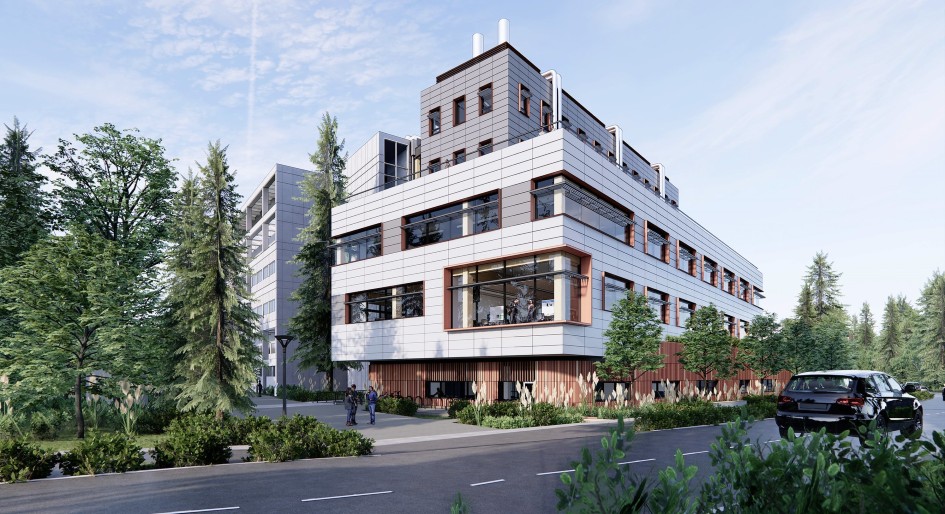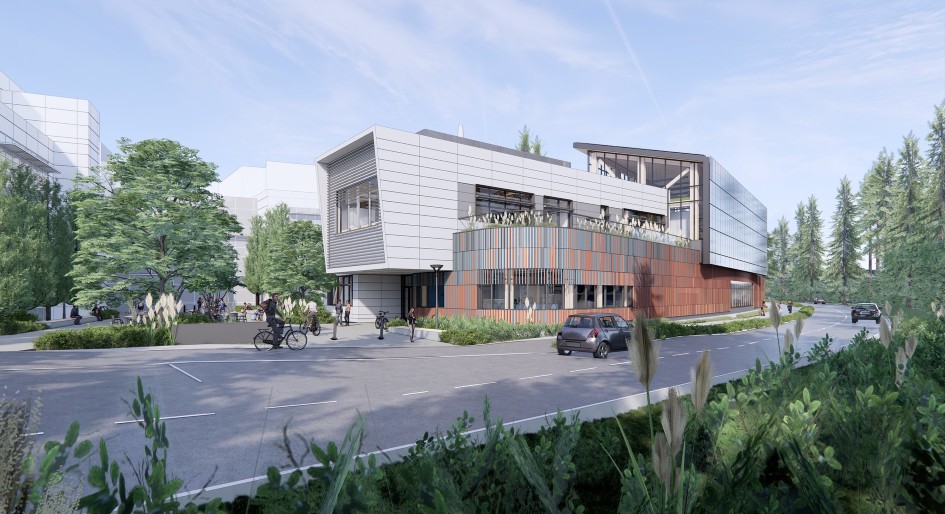With growing demand for engineering and computer science programs, B.C. and the University of Victoria are building new learning facilities and expanding programs.
This will enable more students to work toward high-impact solutions in fields such as environmental sustainability and health-care technologies.
A new high bay research and structures lab will include a 39-foot-high area for structural testing and large-scale experiments related to geotechnical, and materials and building-science research essential to the unique work of civil engineers.
Next door, a six-storey addition to the current engineering and computer science building will bring new laboratory and teaching spaces to support 500 more students expected to enroll in the various programs, with 125 more graduates by 2023. DIALOG is leading the engineering precinct expansion project.

Looking east from Ring Road at the proposed expansion to the engineering and computer science building at the University of Victoria.
Both structures are designed to achieve a net-zero carbon target and will combine Passive House design features and mass timber structure. Other sustainability features include heat pumps and green and solar roofs. The buildings are expected to serve as a living lab for experiential learning, research and industry partnerships, and tackle climate change, clean energy and health-care solutions.
Construction is expected to begin in early 2022, with building occupancy set for 2024. Totalling $89.6 million, this project is being built with $64.8 million from the province and $24.8 million from the university, and through a fundraising campaign.
“These landmark buildings will provide a dynamic environment for the training of future engineers and computer scientists,” said Mina Hoorfar, dean, UVic Faculty of Engineering and Computer Science. “We plan to strengthen Victoria as technology hub by attracting more top talent to UVic and helping position this region as a global centre of excellence.”
Top featured photo: rendering of the high bay research lab’s front entrance.








